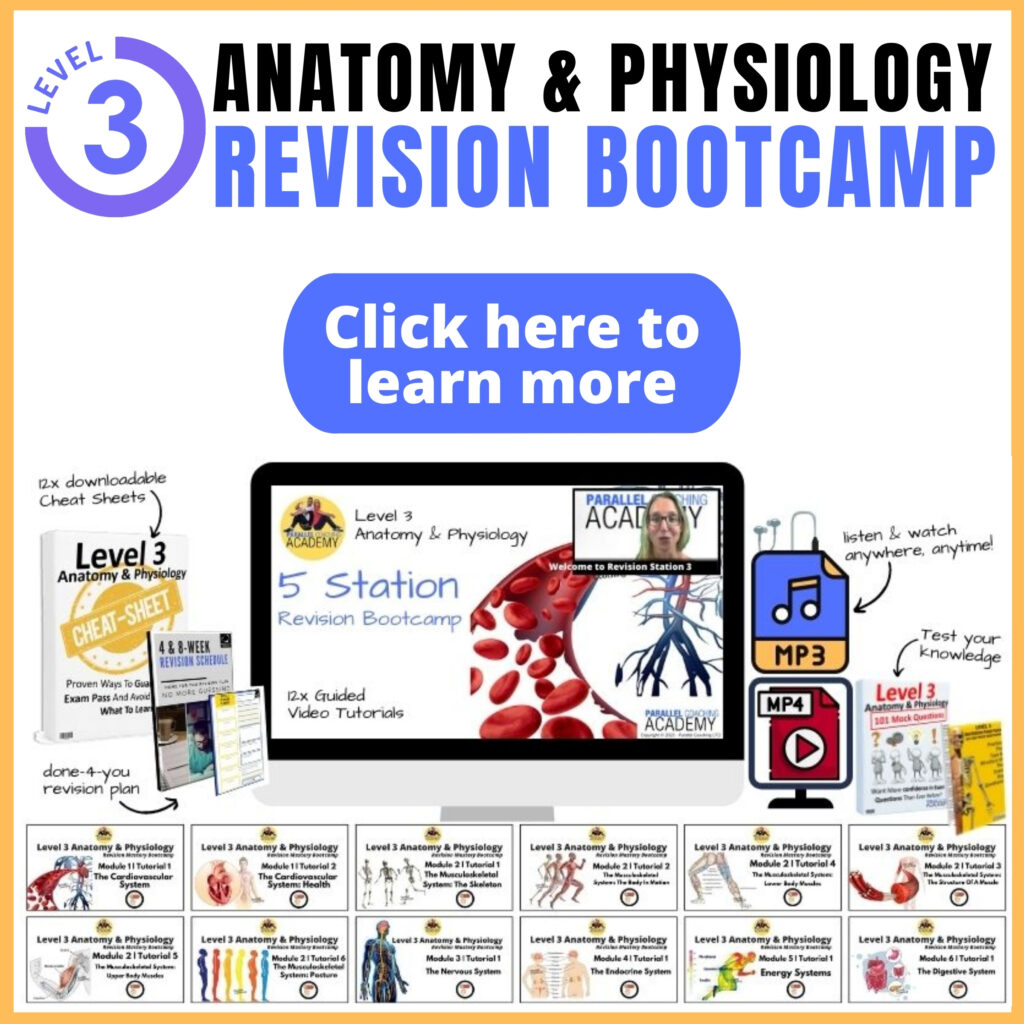As part of your Level 3 Anatomy and Physiology Exam, you need to understand the types of heart valves. You also need to know the names of all four valves, their locations and their functions.
Today’s blog will explore the types and functions of the heart valves with simplicity. At the end of the blog try the three mock questions to test your knowledge on what you’ve learned.
Watch: Understanding The Types Of Heart Valves
The One Way System:
The heart valves stop the backflow of blood. They are flaps that create a One Way system in the heart, meaning that blood cannot flow the wrong way.
The Types of Heart Valves
There are 4 Heart Valves you need to know for your Level 3 Anatomy and Physiology Exam. They can be categorized into two types of Heart Valves

Atrioventricular Valves:
These valves separate the atria (upper chambers) from the ventricles (lower chambers). In a cross-section view of the heart, they look like “strings” in the center of each side of the heart. There are two atrioventricular valves, one on the left side of the heart and one on the right side of the heart
The Bicuspid Valve:
On the left side of the heart, between the left atria and ventricle. This prevents backflow of blood from the left ventricle to the left atria.
This has two “heartstrings” which is why it is called the BIcuspid valve, “bi” meaning two. This valve is also known as the Mitral valve.
The Tricuspid Valve:
On the right side of the heart between the right atria and ventricle. This prevents backflow of blood from the right ventricle to the right atria.
This has three “heartstrings” which is why it is called the TRIcuspid valve, “tri” meaning three. To help you remember that is on the right-hand side of the heart, note that tRicuspid has an “R” in it, and is on the Right side.
Semilunar Valves:
These valves separate the ventricles from the arteries and look like half-moon shapes. The Semilunar valves prevent blood from flowing back into the ventricle from the artery,
There are two types of semilunar valves; the aortic valve and the pulmonary valve
The Aortic Valve
This is on the left-hand side of the heart, which pumps oxygenated blood back to the tissues of the body. The Aortic valve prevents the backflow of blood from the aorta to the left ventricle.
The Pulmonary Valve
This is on the right-hand side of the heart, which pumps deoxygenated blood back to the lungs. The Pulmonary valve prevents the backflow of blood from the pulmonary artery to the right ventricle.
Test your knowledge with today’s heart mock questions:
[NOTE: The answers are below the 3rd questions]
Q1: Which valve prevents the backflow of blood from the aorta to the left ventricle?
A. Pulmonary Valve
B. Aortic Valve
C. Atrioventricular Valve
D. Bicuspid Valve
Q2: What is the role of the Tricuspid Valve?
A. to prevent backflow between left ventricle and left atria
B. to prevent backflow between right ventricle and right atria
C. to prevent backflow between left ventricle and right atria
D. to prevent backflow between right ventricle and left atria
Q3: Where is the Pulmonary valve located?
A. between the pulmonary artery and right ventricle
B. between the pulmonary artery and right atrium
C. between the pulmonary vein and left ventricle
D. between the pulmonary vein and right ventricle
Answers to the mock questions are :
Question 1= B, Question 2 = B, Question 3 = D
If you want more mock questions like this, then you can download more Free Mock Questions: DOWNLOAD NOW
Need More Help with your Level 3 Anatomy Revision?
For Trainee FITPROS Taking Their L3 Anatomy & Physiology Exam.
Learn, Revise & Pass Your Level 3 Anatomy & Physiology Exam In Under 10-hours
(Without Having To Spend Hours Revising Or Feeling Overwhelmed)
If you want to get your revision structured, learn everything you need to know and feel confident on exam day, then click the link below:

Dedicated to More
Hayley “Types Of Heart Valves” Bergman
Parallel Coaching
P.S. You can also find us on the following platforms:
Instagram: Follow Now
Facebook: Like Our Page
Twitter: Tweet Us
YouTube: Subscribe Here
More Anatomy Revision Blogs: HERE

